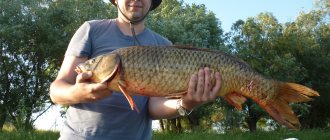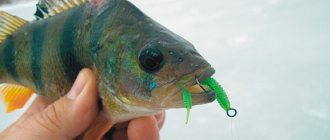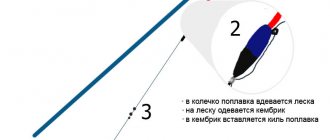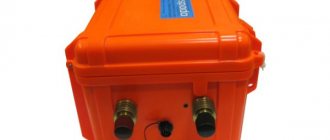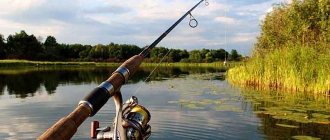The peak of the “soft revolution” passed about twenty years ago. Despite this, the question of jig fishing in general and rubber in particular remains relevant to this day. Since those times, a lot has changed both in equipment and in lures. Among the latter, edible silicone came out on top, significantly increasing fishing performance.
Generally speaking, silicone baits can be divided into two large groups according to the nature of their game:
- active;
- passive.
Active baits
Thanks to good play on uniform wiring, they allow absolutely any animation technique, and therefore are very suitable for beginners.
Among active baits, two types can be distinguished - twisters and vibrotails. Their difference is primarily visual, but in water they behave differently. Thanks to its characteristic hoof-shaped tail, the vibrotail dives somewhat slower than the twister with its sickle-shaped tail. At the same time, twisters are not particularly distinguished by the variety of amplitude-frequency characteristics. While the vibrating tail changes noticeably with changes in the tail area, angle of inclination, length and thickness of the joint. This is important to remember especially when you need to maximize the pause time.
Of course, the duration of the hang is primarily affected by the weight of the load, but sometimes changing one load to a smaller one is clearly not enough. And in this case, a vibrating tail will help very well. This is especially important in cases where you need to achieve long casting, but while maintaining a smooth retrieve. For example, this happens in shallow waters, where the need to throw far to reach the hole is very urgent.
In addition, the high intensity and force of vibration of the vibrating tail allows you to collect a predator from a greater distance, which is very helpful in cases where you need to quickly find fish in a large area, but it does not respond to other baits except jigs. Moreover, the combination of slow retrieve coupled with edibility gives a high chance of persuading inactive fish to bite.
Making your own tires
You can make edible baits yourself, because purchased products quickly dry out and change shape, and completely stop playing. Similar rubber is made with your own hands from the same rubber purchased from various companies. New life is simply breathed into dried products. This is done using ordinary clean boiling water. The curved tails of twisters and vibrotails take their original shape in boiling water. The plastic becomes much softer, and the product begins to play in the water.
The only downside to this process is that after cooking and cooling, the rubber becomes sticky. To get rid of this, just lubricate the item with silicone grease. The smell of lubricant completely disappears after 2 hours.
You can make “tasty” rubber like this:
- Take a container that you don’t mind throwing away. This could be a simple metal bowl.
- Cook the products for several minutes. 2-3 minutes is enough, although there are mentions of 20. The rubber becomes quite soft.
- Dry the product well by laying it on a piece of cloth.
- After drying, the baits are placed in a box, then lightly sprayed with silicone. Liquid silicone can be purchased at an auto parts store.
- Make rubber edible using a synthetic-based attractant. It is stored in the product for a very long time. The natural one evaporates quickly. The products are placed in a plastic bag of a suitable size and lightly mixed with the attractant. No air should get inside.
- After a day, the products can be used.
Passive lures
Slug
Such baits are devoid or practically devoid of their own game, and the way they move in the water directly depends on the ability to use spinning tackle. If in a traditional jig all the animation is built on a stationary rod, rotation of the reel and pauses, then passive rubber requires the skills of a conductor. Literally.
Of course, using the classic “two or three turns - pause” scheme, you can catch something, but the facts of catches will be more like simple coincidences. While various twitches and movements of the tip will bring a very significant result, in every sense.
Lucky John Rock Craw
Despite its apparent simplicity, passive rubber also has several varieties - these are slugs, worms and crayfish with creatures. Moreover, they differ not only in appearance, but also in the technique of serving them to fish. In general, these techniques are very similar, but each has its own subtleties. Thus, crayfish and furry creatures like to lie down on the bottom for a while. At the same time, the active phase of wiring is much sharper than that of driven worm-shaped baits.
Some passive baits, especially crayfish (for example, LuckyJohn Rock Craw and Kosadaka Kong) have small extensions in the form of thin twister tails that actively play on a uniform retrieve. But the intensity of these vibrations is too low to include such baits in the active category.
Over time, soft baits, due to their design features, low cost and availability, have made it possible to very accurately adapt to specific fishing conditions thanks to various variations in installation and equipment. But first things first.
Jig
Lure on a jig head
It all started a long time ago with a rig with a dead fish, which later in Europe began to be called the “Drashkovich rig.” And then a “reusable live bait” was invented - the vibrotail. Since the traditional wiring for dead fish was alternating stretches and pauses, they began to work with silicone in the same way, and this gave positive results.
At the same time, two styles of jig fishing were born and continue to exist - Russian and American. The difference between them is that in the American version, wiring is carried out with a rod, and in the Russian version, with a reel. Each of them has its own disadvantages. So, in Russian jig it is necessary to clearly fix the tip of the spinning rod in one position. This is sometimes difficult to do, especially in the wind. In the American style there are more disadvantages - the moment between the end of the active retrieve and touching the bottom is practically uncontrollable, because at this time the slack is exhausted.
But what both styles have in common are installation options, of which there are only two:
- The first - classic - is fixing the bait on a rigid jig head.
- The second, newer and more popular is hinged mounting. Mounting on a jig head has more disadvantages than advantages.
Firstly, it is impossible to vary the weights. In addition, very often there is a clear pattern when the size of the hook is almost directly proportional to the weight of the load. And what should we do when we catch pike with large rubber, but the conditions are such that loads of more than three grams are too large?
Secondly, all other things being equal, the number of trips with a jig head is significantly greater. This could be from a low-quality hook, damaged by overheated lead, or from a lever that creates straightness in the structure. In addition, the jig head flies worse. And with hinged mounting everything is very simplified. Roughly speaking, you can take one single bait, equip it with a hook of a suitable size, shape and quality, and collect a lot of Cheburashkas of different weights.
Dmitry (DmG)
The main consumer of edible rubber in our conditions is perch. An active, hungry perch is ready to grab almost any rubber of suitable size. For a passive perch, the overall pace of the retrieve is slower, with long pauses; in such conditions, he has time to “sniff” the bait and if it smells nasty, then he most likely will not take it, but if it smells of something tasty, then he will take it will eat In second place after perch in terms of preferences for edible rubber is pike perch; edible crustaceans give good results for it, but I have not yet noticed any outstanding results for pike.
For fishing areas where you should give preference to edible rubber, these are shallow depths with no or little current in the fish holding area. The stronger the current, the more actively the fish have to attack the bait, and there is no time to “sniff” the bait.
The equipment that works best is one that has minimal weight; usually edible rubber has little or neutral buoyancy; with a hook, it turns out that the bait either slowly sinks or is suspended in the water column. The most popular rigs in our conditions with minimal rubber burden are rigs with a forward sinker, in particular lead ones, Carolina. Wiring such equipment involves a combination of various combinations of pulls and jerks with pauses of varying duration, where the advantages of edible rubber are realized. Next, I would put a jig with light weights, or rather, when the weight of the load is used such that there is a prolonged fall of the bait. The slower the wiring, the greater the need to use edible rubber.
Retractable leash
This equipment appeared for two reasons. Firstly, due to the need to cast light bait far. And secondly, because of the need for a smooth presentation of this bait to the fish. This equipment also allows you to keep the playing bait in the biting zone for as long as possible, especially in the current, which is very good for seducing passive fish. But there are several conditions, non-compliance with which can and will certainly lead to negative consequences.
- The length of the leash must be at least a meter. You can even identify a certain pattern: the slower the current and the more passive the fish, the longer the leash should be.
- The bait on the line should not rotate around its own axis. The absence of rotation is achieved by selecting the weight of the offset hook, or by additional loading using a float pellet. But this applies to a greater extent to twisters, and creatures and vibrating tails rarely need such adjustment.
- Do not throw against the wind or upstream. As a result, the leash wraps around the main line and the wiring turns out to be empty. But, if the conditions are such that there is no other way to cast against the wind, then the cast in this case should be as smooth as possible.
Diversion baits can be either active or passive. At the same time, passive ones sometimes work better.
Plus, on short and smooth jerks, the driven passive bait darts left and right in a very interesting way. It is especially good to achieve this behavior from the Sexy Impact slug from Keitech or its budget analogue from Kosadaka – Sota worm. They are both made according to the same principle - casting in two stages. Thus, a floating back is obtained (due to the greater amount of salt in the composition) and the bait does not twist.
A similar property should be noted for the Fat G-Tai lGrub twister from Reins. True, in this case, the ratio of parameters, and not the characteristics of the salt composition, played a role. As for twisters with a small tail and a long body, like Bugsy from Bait Breath, Fat G-Tail Saturn from Reins, Ballist from Lucky John and Kosadaka Links, they do not twist at all and you can choose the hook parameters at your discretion and fishing conditions.
Caroline and Tirette
The essence of the equipment is that a load in the shape of an olive or a bullet moves freely along the main line. And to the end of the main line, a leash up to 60 centimeters long is tied through a swivel, to which the bait is attached.
Initially, this equipment was designed for bass fishing, but our fish also liked it. Primarily zander and perch. Another element of the equipment is glass or plastic beads between the sinker and the swivel. Americans explain their necessity by saying that when tapped, they produce a sound similar to the one a crayfish makes when molting. In general, this version seems far-fetched, since the number of bites did not differ in the case of installation without beads. The only more or less plausible version seems to be the one where it is said that the beads protect the knot from deformation under the influence of an impacting load.
The equipment is exclusively bottom and the main wiring is slow drawing with pauses. Thanks to the shape of the load, it passes obstacles well, and therefore is suitable for fishing among scattered stones and large debris.
Tirette is a similar French rig. The main difference in it is the use of a load shaped like a plow. Thanks to this shape of the sinker, the tirette passes through bottom debris more freely.
Texas and Florida
Also American equipment, named after the states where they were invented. At first glance, they are no different: the same wiring, the same components. However, there is a difference:
- First of all, a lead (but more often a brass or tungsten) bullet on a Texas bullet walks freely along the main line. In Florida it is recorded.
- The second difference is that in Texas the bait is attached in the traditional way for unhooked baits, while in Florida a worm is used, which is fixed on the offset machine in a certain way. It looks like this: a hook tied to a fishing line is pulled inside along the body of the bait for about 1.5-2 centimeters, then brought out and secured as a non-hook. Thus, the hook ring is hidden in the body of the bait, and its head is covered by a special recess in the rear part of the load, which contributes to better maneuverability.
The wiring of both rigs is as follows: casting, the rod is set parallel to the surface of the water and the slack is reeled in, the bait touches the bottom, a short pause, continuous and slow rotation of the reel while simultaneously raising the tip of the rod to a vertical position with swaying and again a pause while touching the bottom. In Texas, crayfish and especially creatures like Hogy shrimp from Lucky John are good baits. The weight in these rigs should be 1.5-2 times the weight of the weights used for jigging in a given location.
Places of application are the very wilds of dense snags and thickets of grass.
Split shot
This rig has been a hit with rudd and perch over the last couple of years. Its essence is that some kind of bait is tied to the main fishing line, and an ordinary float shot is fixed about thirty centimeters from it. Any small twister, vibrotail or crayfish is suitable as bait. Wiring ranges from uniform to wavy. This equipment is created primarily for shallow places, therefore the maximum load for it is 3 grams.
Gregory (Grinya)
Edible rubber is something that the fish should eat or chew for an extended period of time. They often put edibles on standard jig weights and try to fish with them, but the fish don’t eat silicone with a 20 gram “chebur”. It's logical. Firstly, when moving with a step, the fish attacks the bait, reacting to movement, and not to smell and taste, and secondly, when it grabs the bait, it feels the burden that is attached to it, and it will not eat such bait. Therefore, it is worth paying attention that edible fishing is relevant when the fish attacks the bait in a static position, and not in dynamics. According to my calculations, the maximum weight in a jig with which the fish will consistently eat the bait is limited to 3 grams in still water and 5 grams in the current; the figure is approximate and can fluctuate up to 1 gram in one direction or another. You can serve edible rubber in different ways - with a microjig or a leash.
I want to clarify right away that in my understanding, MJ is not step fishing with ultra-low weights, but a separate direction in fishing, where there is no limit to creativity in terms of fishing and, most importantly, the fish eats our bait not only during animation, but also in static position This is where edible rubber comes to the fore. Probably, the bulk of our fishing fraternity has encountered such a situation - we came to a reservoir, the presence of a perch is beyond doubt, and it either simply pokes at the wiring, or pretends that it is not there, and it is precisely in such a situation that the MJ will most likely save us 90%.
In our region, the most popular rigs are the diverter (classic) and the Carolina. Both of these rigs are phenomenal for catching perch under different conditions. And the essence of excellent catches is that the bait is not burdened and the fish can calmly suck it in, both from the bottom and dangling in the water column. When we use these rigs to catch passive fish that bite during long pauses, that’s when it’s worth using edible rubber.
Vacky
Wacky worm literally translates as “stupid worm.” And indeed, everything here is wrong: hooking, behavior in the water, wiring. However, fish resting in the thick grass like this equipment. Moreover, sometimes there are episodes when the fish refuses to react to anything other than a slowly (thanks to the horizontal position in the water) sinking worm, appetizingly vibrating its ends.
Most often the weckie is mounted without weight, but sometimes it is useful to add a small shot either to the hook or to a piece of fishing line a few millimeters long. It is in this equipment, more than in any other, that the speed of immersion is important. Wiring is a series of smooth jerks and pauses.
Neko. Fundamentally not much different from veka. However, the main difference is that a nail-like weight is inserted into the head of the bait. Thus, in small jerks, the worm seems to jump along the bottom, wriggling with its whole body.
The best edible rubber and silicone baits
The industry began to produce soft rubber baits recently and over the past ten years they have become a necessary part of all accessories of every angler.
Apparently no one goes fishing without rubber bands in their bag. This rapid promotion can be explained very simply: all of them are practically catchable, have a low price and are easy to use. True, with such a large assortment of twisters, worms and vibrotails and other rubber baits, it is difficult to find one that suits the given fishing conditions. The whole reason is that due to high demand, fakes are thrown onto the market; they are difficult to distinguish from real quality ones.
All soft baits are divided into:
- Dynamic , can make various movements under the pressure of water flow. The body of such baits has a certain increased resistance and elasticity. Under the influence of water, it is always in a reciprocating motion;
- Passive , there are few of them and they make movements only when the rod jerks.
Jig rig
The Japanese went their own way in mastering jig fishing.
This is how the jig rig rig appeared. It differs from our installation in that instead of a Cheburashka they have a conical sinker, attached to the offset machine through two winding rings. Using such a sinker allows you to confidently fish in stones, play the bait almost on the spot, and the cast goes a little further than with a Cheburashka. Unfortunately, it is quite difficult to find ready-made Owner equipment on sale, but making it yourself does not present any difficulties. And the most successful baits for it are crayfish and creatures, especially those that have “donkey ears” and a “beaver tail.” For example, such as Lucky John Hogy Hog, Hogy Shrimp and Bait Breath Gottu.
Edible rubber for fishing: video
A very interesting and useful video, which explains in great detail the most popular questions about fishing with edible rubber. Watch the video and find out the answers to these questions:
- Does the color of edible rubber matter and does it affect the results of fishing?
- Why do some rubber have a strong smell, while some have virtually no odor?
- Why does edible rubber tear easily and become unusable?
And many other most interesting questions! Watch the video:
Donkey rig
At first glance, it is not clear what is “donkey” in this curious equipment. However, when the baits in the water begin to move, they behave like two stubborn donkeys, trying to get off the road.
The equipment looks like this: a small swivel is tied to the main line, and the second swivel moves freely along the main line. Leashes made of fluorocarbon or rigid monofilament, 20-60 centimeters long, are attached to them, to which two identical (this is important!) baits on offset hooks are in turn attached.
It is best to use tailless slugs as bait. It is thanks to the absence of a tail that the baits move as realistically as possible. The wiring consists of light jerks with short stops. Since no additional weight is used, this equipment is best used at shallow depths.
Drop shot
If the bait needs to be held in one place for a long time so that it attracts the attention of a predator, a drop shot is indispensable.
Unlike a pull-out leash, a drop-shot involves targeted use. Thus, you can fish for an unlimited time on small windows in the grass, gaps among snags and compact bottom anomalies. The equipment is assembled quite simply: at the end of the main fishing line there is an elongated, oblong-shaped sinker, and 20-50 centimeters from it the hook is rigidly attached with the tip at the top. It is better to use a bait that can wriggle its entire body. However, the more familiar twisters and vibrating tails work no worse.
Area of application: short casts, great depth. It is very important that the bait is above the bottom. The wiring looks like swaying, loosening and tensioning the fishing line (the load remains in one place), a short pull of the load and all over again.
Classification of edibles
According to the level of “edibility”, rubber can be:
- with the smell specified by the manufacturer during manufacture;
- impregnated with appropriate attractants.
Edible silicone baits are also divided into:
- active;
- passive.
Active edible silicone
Such baits are characterized by the presence of their own game, which attracts a predator. Vibrotails and twisters are the brightest representatives of active baits. Their use is possible without special skills, since it is enough to just master the technique of simple spinning wiring. For beginners, vibrating tails and twisters are an ideal option.
The most popular types of active silicone wiring are:
- uniform;
- uneven;
- stepped or classic;
- jumping.
Passive edible silicone
Unlike active, passive rubber, when driven , does not have its own play, but simply floats almost in a straight line and does not make other movements. To interest a predator, you should play with such bait using a fishing rod. Imitations of worms and various crustaceans are examples of passive rubber. It is difficult for a novice fisherman to cope with passive eating without appropriate practice, but for a skilled fisherman it often turns out to be more than successful.
There are many variations of wiring for passive edibles, but among the simplest and most effective are:
- stepwise with pauses;
- bottom dragging with long pauses;
- stepwise with play along on a long pause.
Flex rigging
This is not exactly a rig, but a mounting method that gives more freedom to the bait. It consists of placing the bait by the head part. This method is used for fishing with a jig head or with a swivel mount. The best bait for it is, first of all, crayfish. Particularly good is the Ring shrimp from Reins, which moves very attractively thanks to its floating claws.
Unloaded tires
This option is necessary for fishing in grass and shallow places. Most often, the buoyancy of silicone bait is close to neutral, but there are also specially created floating models, so you should choose more carefully. The wiring is something between twitching and a jig step.
The selection of specific models of the best brands of edible rubber is described in the link.
Surface equipment for fishing with edible rubber - bombard.
Choosing a jig spinning rod once and for all.
Taste preferences of predators:
- for the spotted robber, you should use a bright edible with the aroma of fish and its blood;
- perch is attracted by the smell of bloodworms, shrimp and smelt;
- when choosing a bait for pike perch, you should choose silicone with the taste of shrimp and fish blood, or decide based on the local preferences of the fanged;
- Despite the described preferences of predators, it is still advisable to have a small arsenal of edible baits when fishing to be able to experiment with aromas based on natural odors.
- Silicone baits from AliExpress
- Fishing with pearl barley
- What bait to use in spring
- Color of silicone lures
Who? Where? For what?
Sudak
. All of the equipment listed above is suitable for catching this fish, except for the split shot and unloaded rubber. Pike perch, especially large ones, love to wait for prey in thick snags, from which it is easiest to lure them out with a texas. A retractable leash is needed when a small bait is required, but with long casting. If the fish is in an inert state and needs to be coaxed, forcing the bait to play in one place, then a drop shot is indispensable. If you're a beginner, read this basic guide to fishing for walleye with a spinning rod in the spring, summer, and fall.
Perch
eats everything. True, large specimens in most cases stay near the bottom in deep places, from where they can be retrieved using a large crayfish on a Texas or Carolina rig as bait. It is convenient to catch smaller perches with a retractable leader and a split shot. But in general, the traditional jig shows the best results.
Pike
. Of the above, the pike is not very fond of only one thing - a retractable leash. Captures sometimes happen, but quite rarely. Therefore, targeted fishing for this fish with a retractable leash is irrational. The only mandatory change that needs to be made to any rig is a steel leader. After all, pike are famous for the sharpness of their teeth, and losing bait, even silicone ones, is a costly affair.
Based on the above, we can conclude that having knowledge and practical experience in installing and using the described equipment, the chance of being left without fish is minimal. And it is important to remember that combining retrieves and rotating baits is a sure way to success even on a crowded pond.

